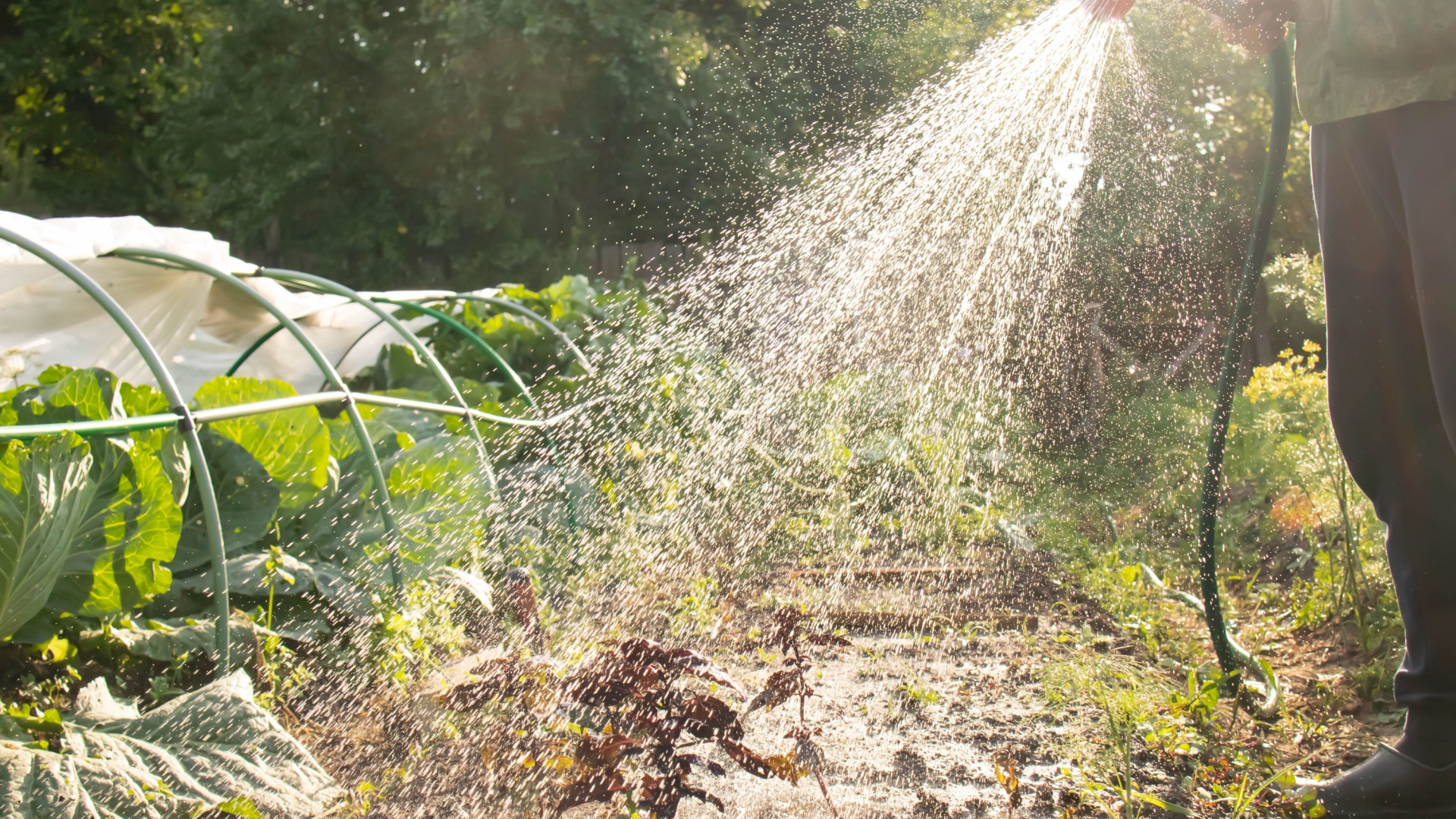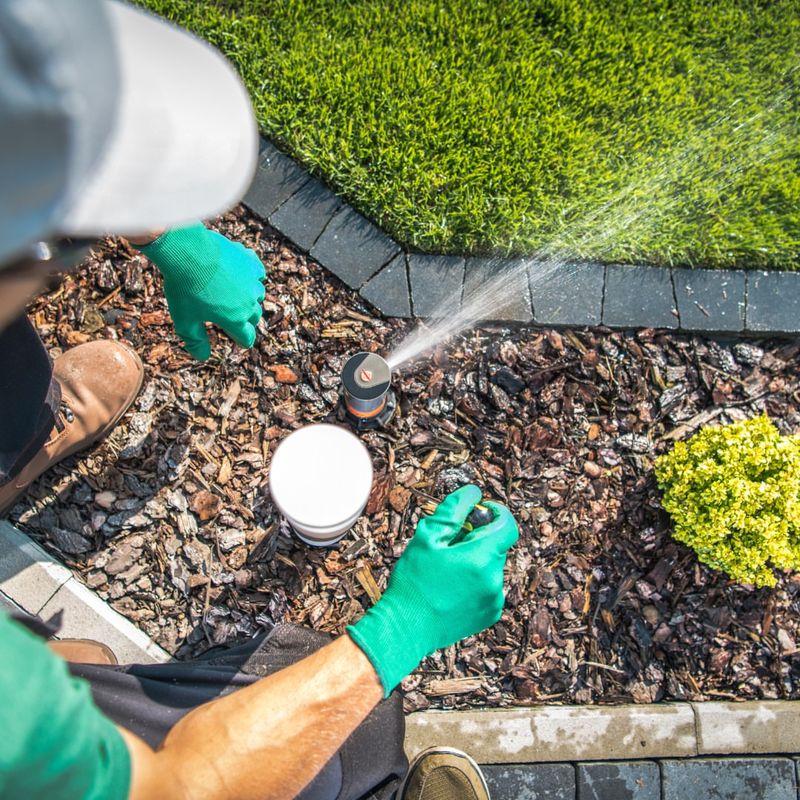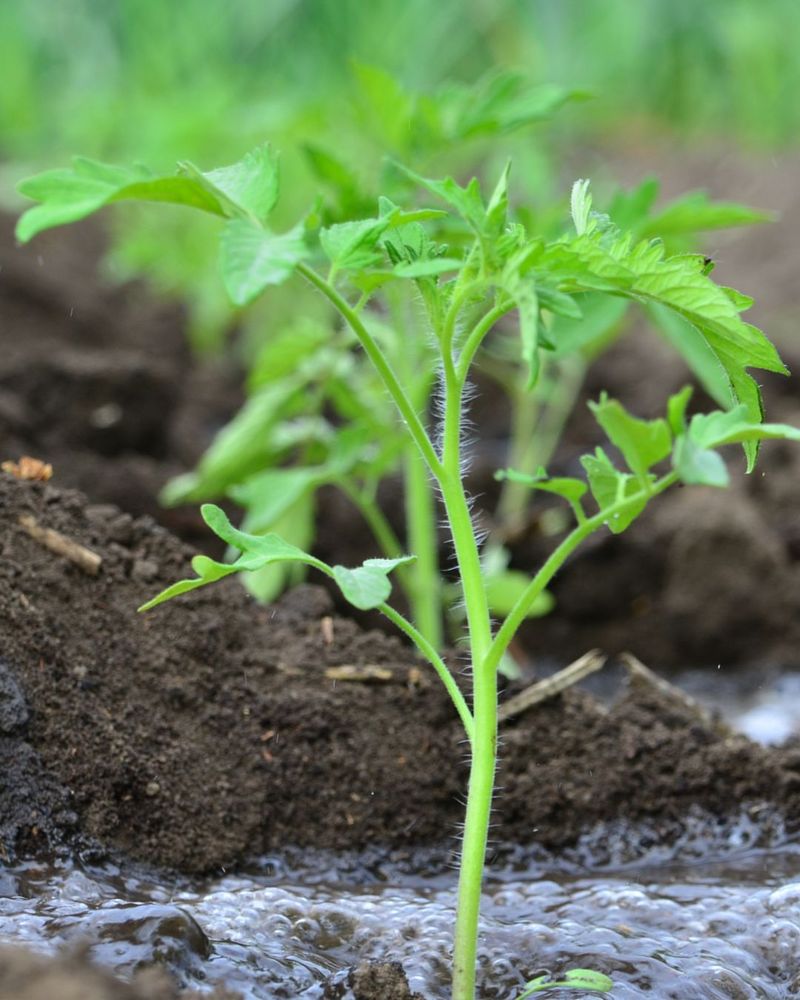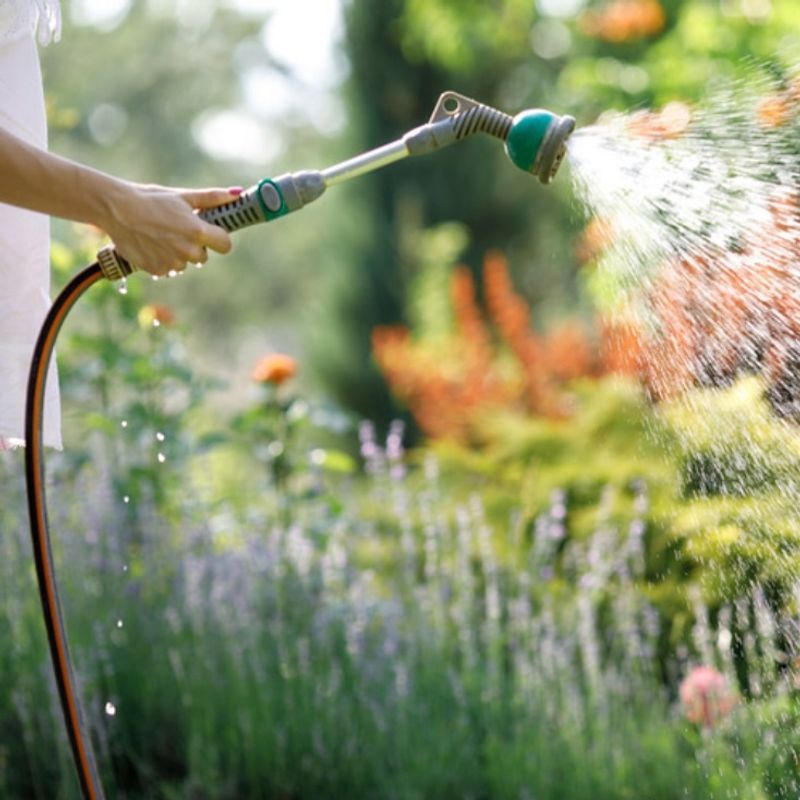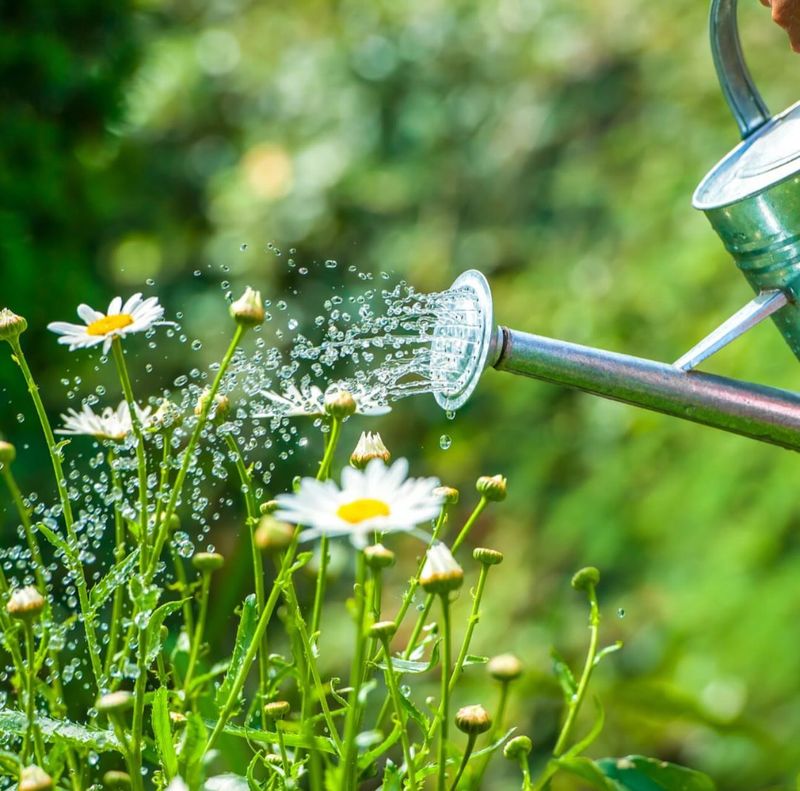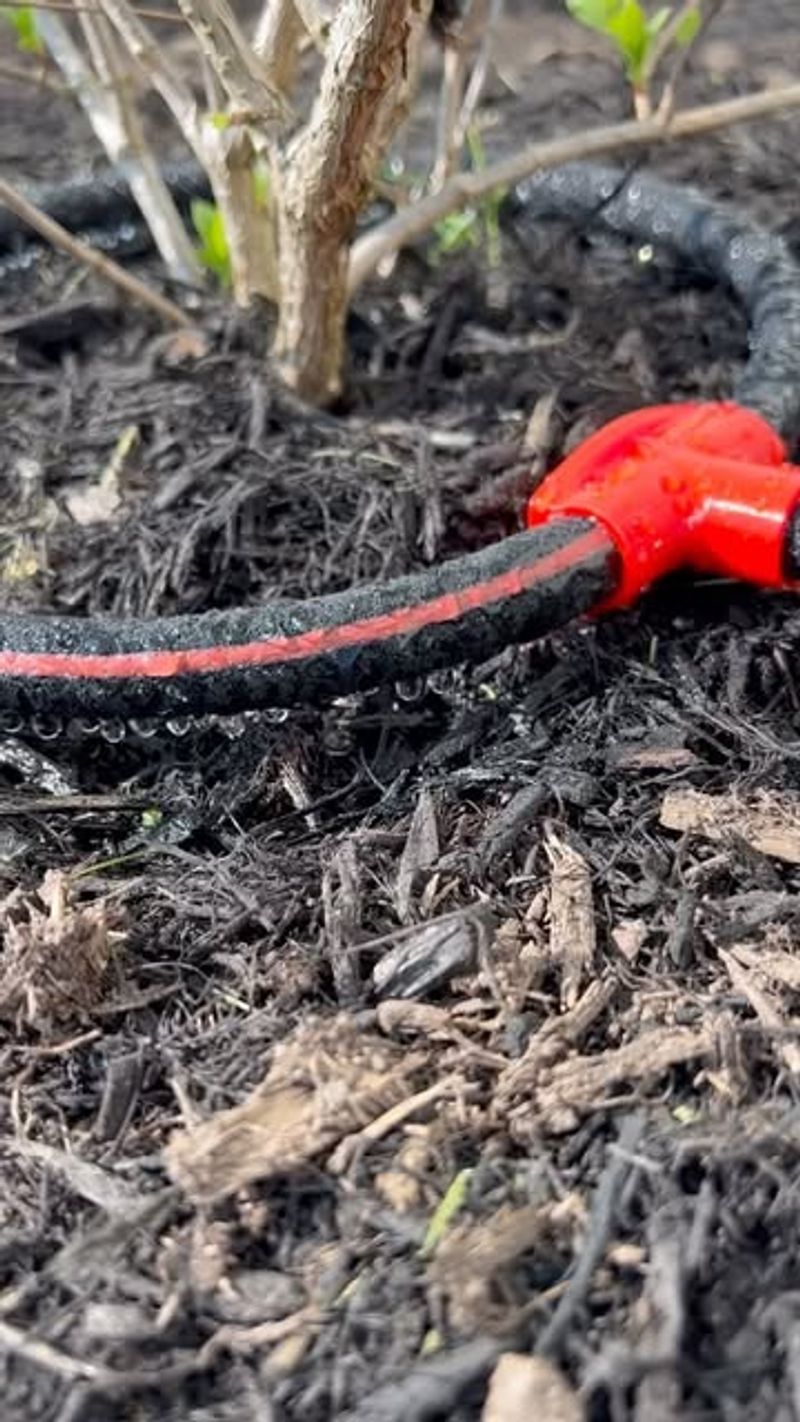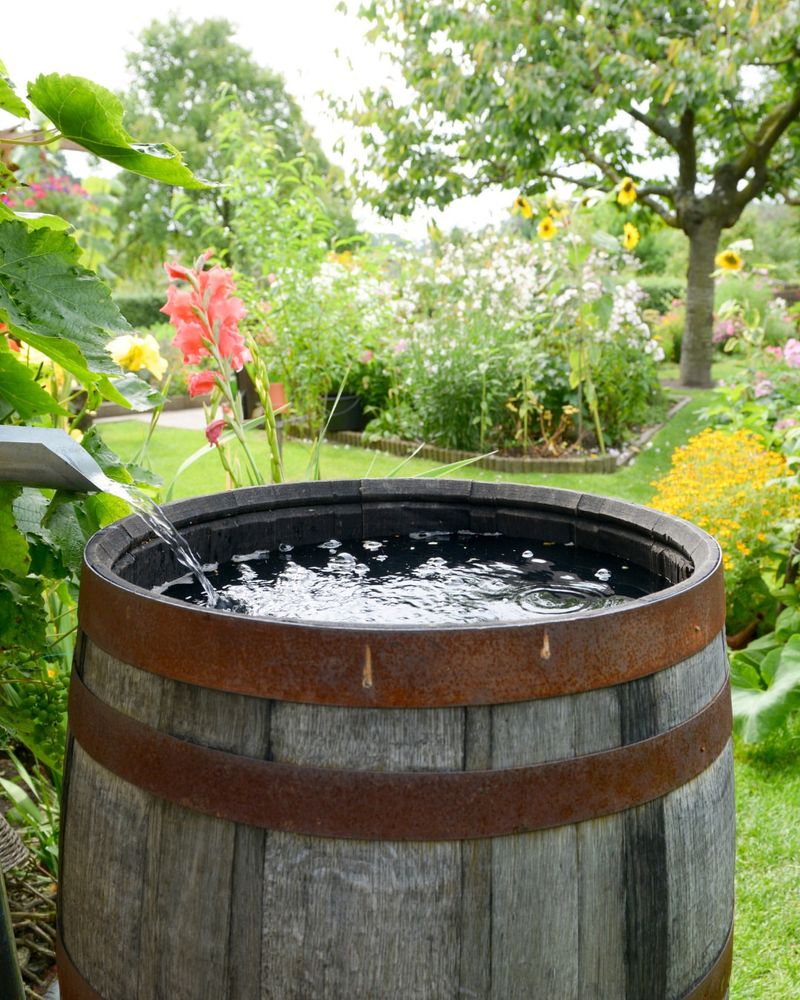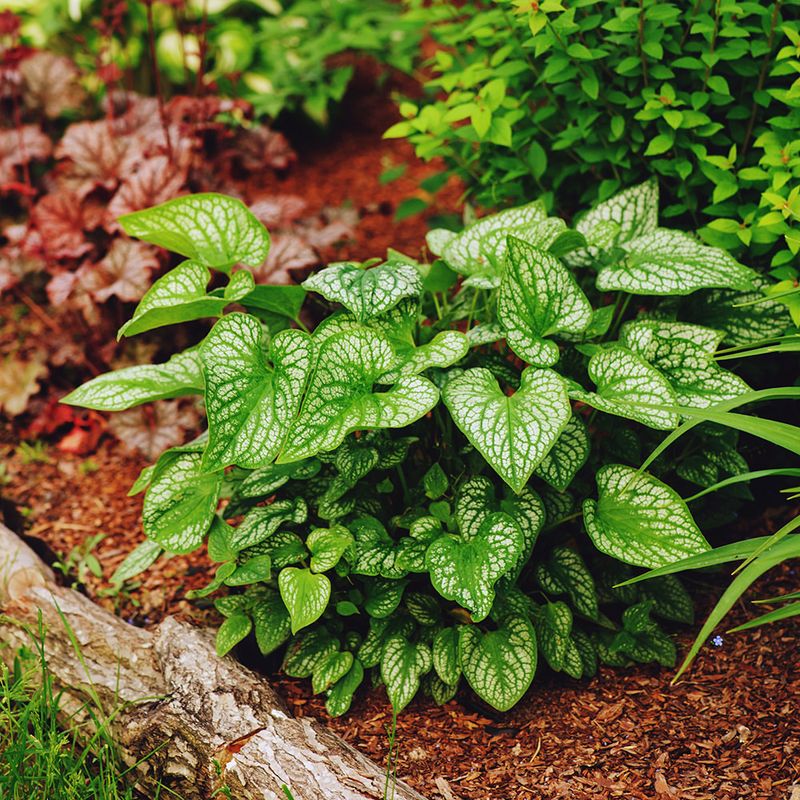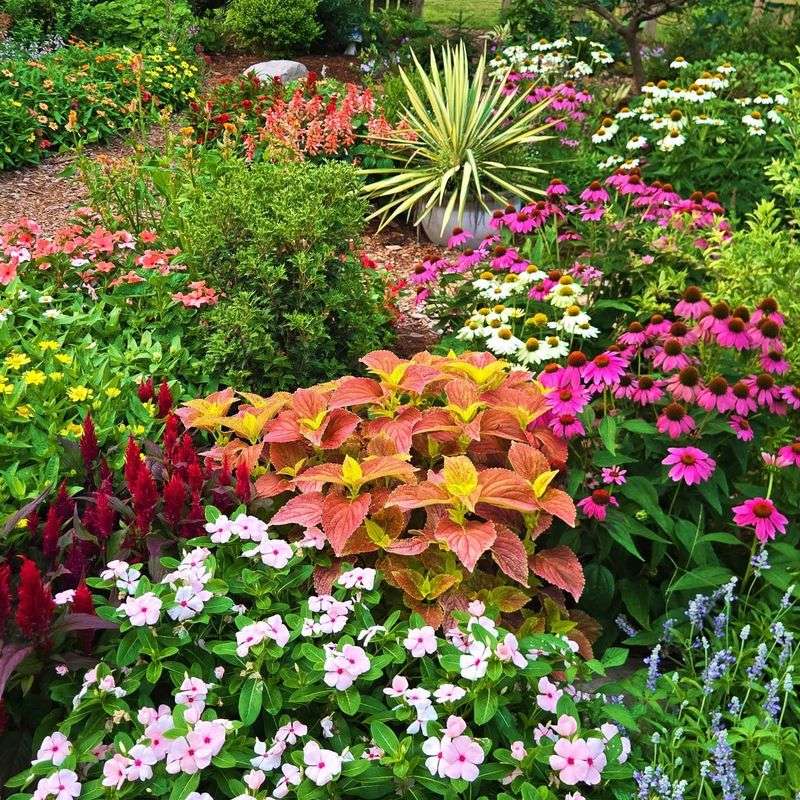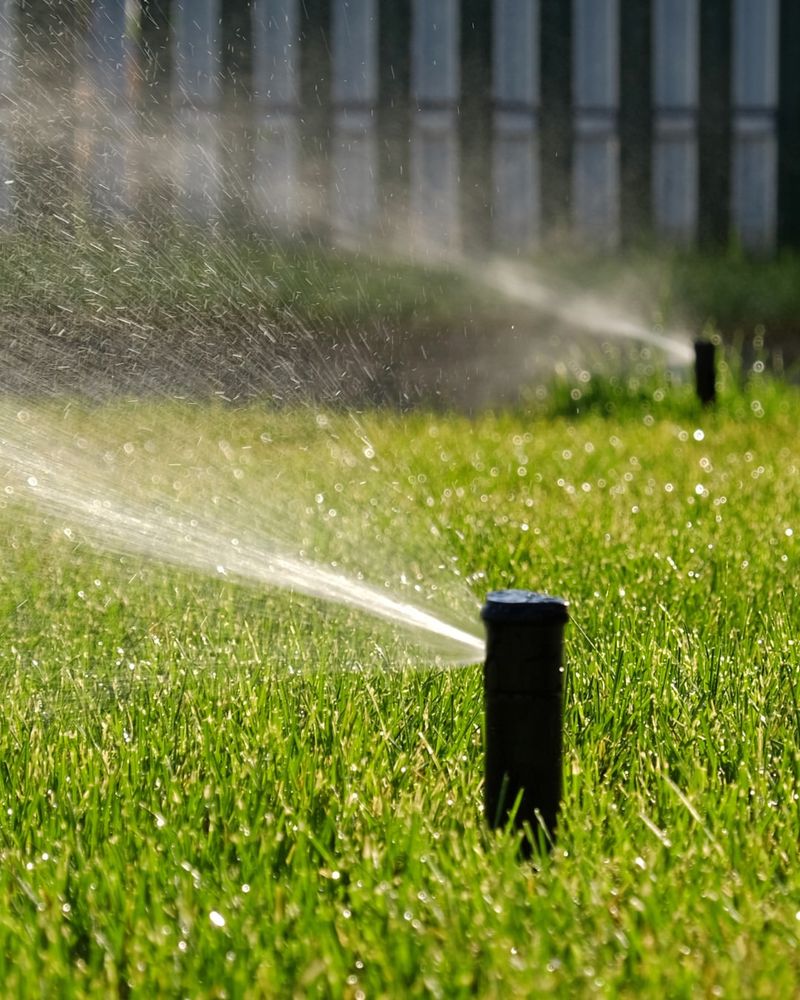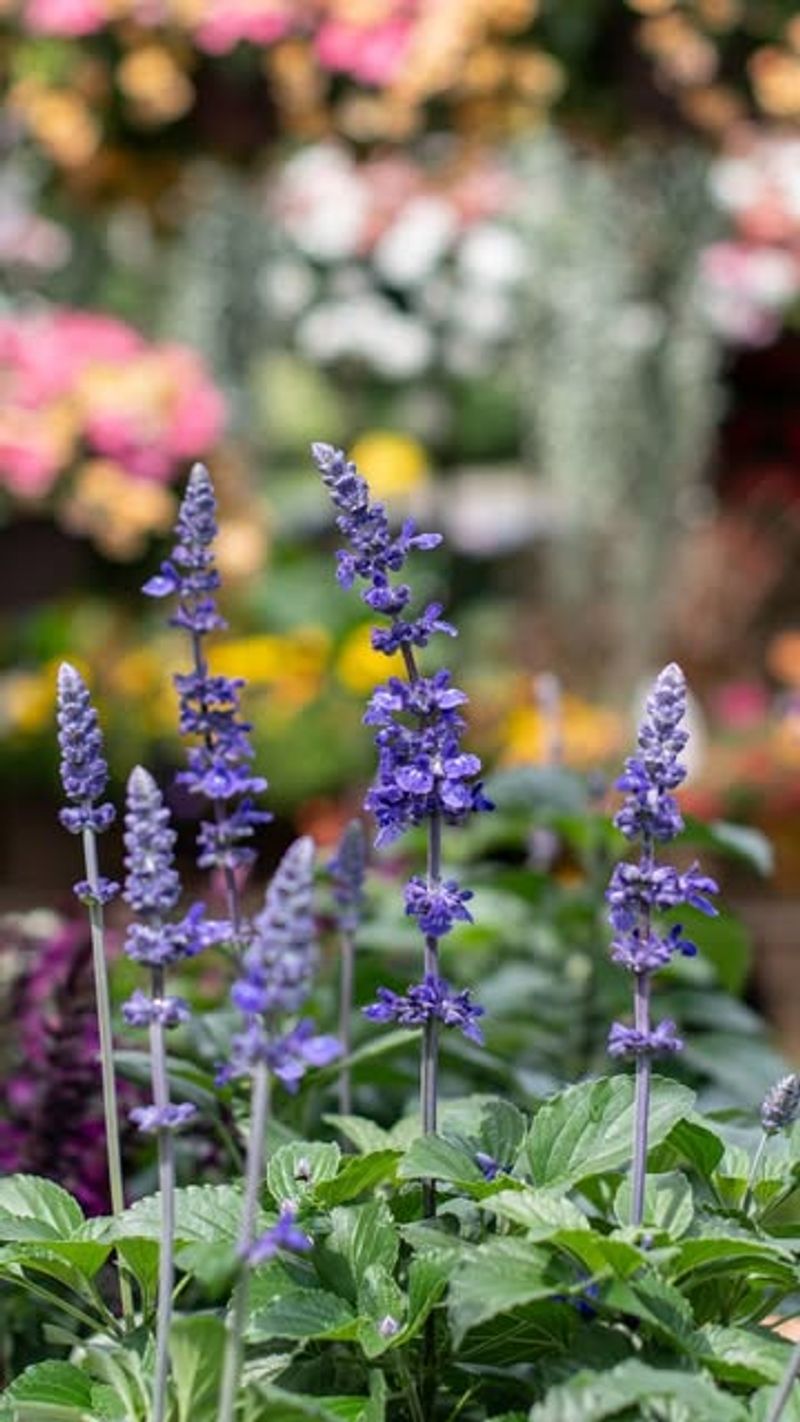Watering your garden seems simple—but timing makes all the difference. Water at the wrong time, and you could waste water, invite disease, or stress your plants.
In this guide, you’ll learn the worst time to water (that too many gardeners still use), plus 10 smart tips for doing it the right way—so your garden stays healthy, hydrated, and thriving.
1. Avoid Midday Watering At All Costs
Watering during the heat of midday (10am-2pm) is like throwing money down the drain. When the sun is at its strongest, up to 30% of water can evaporate before plants even get a chance to drink it up.
The hot sun can also create a magnifying effect when water droplets sit on leaves, potentially burning your precious plants. Your water bill and garden will both suffer from this common mistake.
Garden pros consistently rank midday watering as the number one watering error that beginning gardeners make.
2. Early Morning Magic Hours
Between 5:00 and 8:00 AM sits the golden window for garden watering. Plants wake up refreshed and ready to absorb moisture during this time, preparing them for the day’s heat ahead.
Morning watering allows leaves to dry completely before evening, reducing fungal disease risks that thrive in damp conditions. The calm morning air typically means less water lost to wind drift.
Many professional gardeners set automatic timers for this period to ensure their gardens receive water during these optimal hours.
3. Evening Watering Cautions
While evening watering (after 6pm) conserves water by reducing evaporation, it comes with risks. Wet leaves overnight create perfect conditions for powdery mildew, black spot, and other fungal diseases to develop.
If you must water in the evening, aim directly at the soil rather than splashing the foliage. This keeps leaves dry while roots still get the moisture they need.
In humid climates especially, evening watering should be approached with extra caution due to increased disease pressure.
4. Deep Watering Beats Frequent Sprinkling
Light, frequent sprinkles encourage shallow root systems that make plants vulnerable to drought. Instead, water deeply but less often to train roots to grow downward in search of moisture.
A good rule of thumb: most established plants prefer one inch of water per week, delivered in one or two sessions. Use a rain gauge or tuna can to measure how much water your garden actually receives.
Deep watering also helps wash away salt buildup in the soil that can damage plant roots over time.
5. Soaker Hoses Save Water And Plants
Soaker hoses deliver water directly to the soil where roots need it most, reducing waste by up to 70% compared to sprinklers. These porous hoses ooze water slowly, allowing proper absorption without runoff.
Position soaker hoses about two inches from plant stems and cover with mulch to further reduce evaporation. For vegetable gardens, snake the hose in rows between plants for maximum efficiency.
Many gardeners connect soaker hoses to timers, creating an efficient automatic watering system that delivers moisture at the perfect time.
6. Rain Barrel Collection Systems
Harvesting rainwater provides plants with chemical-free, room-temperature water they love. A single inch of rain on a 1,000-square-foot roof yields approximately 600 gallons of water – enough for many garden needs!
Modern rain barrels come with overflow valves, mosquito screens, and spigots for easy garden hose attachment. Position barrels under downspouts and elevate them slightly for better water pressure.
Beyond saving money on water bills, collected rainwater helps reduce stormwater runoff that contributes to erosion and water pollution.
7. Mulch Maintains Moisture Levels
A 2-3 inch layer of organic mulch acts like a protective blanket for soil, reducing evaporation by up to 70%. Materials like shredded bark, compost, or straw gradually break down, improving soil structure while conserving moisture.
Leave a small mulch-free zone around stems and trunks to prevent rot. Refresh your mulch layer annually, adding just enough to maintain the recommended depth without suffocating plants.
During hot summer months, mulched gardens typically require watering half as often as unmulched areas – a significant time and water savings.
8. Different Plants, Different Water Needs
Group plants with similar watering requirements together to avoid over or under-watering. Drought-tolerant lavender planted next to thirsty hydrangeas creates a maintenance nightmare and wastes water.
New transplants need frequent watering until established, while mature native plants often thrive with minimal supplemental water. Vegetables typically need consistent moisture, especially during flowering and fruiting stages.
Container plants dry out faster than in-ground plantings and may need daily watering during hot weather, regardless of the time of day.
9. Weather-Based Watering Adjustments
Smart gardeners adjust watering schedules based on recent weather conditions. After a good rain (½ inch or more), skip your next scheduled watering to prevent root rot and nutrient leaching.
During heat waves, plants may need extra water, but apply it during early morning hours for maximum benefit. In cooler, cloudy weather, reduce watering frequency to prevent waterlogged soil.
Wind dramatically increases water evaporation rates, so on breezy days, water at the calmest time or use targeted soaker hoses to minimize waste.
10. Signs Your Garden Is Thirsty
Plants communicate their water needs if you know what to look for. Wilting during the day that recovers at night indicates water stress, while footprints remaining visible on lawns mean grass needs moisture.
Dry soil that pulls away from the edges of containers signals urgent watering needs. The screwdriver test – pushing a screwdriver into soil – reveals moisture levels; if it goes in easily, soil is moist enough.
Leaf curling, unusual yellowing, or slowed growth can all indicate water stress before permanent damage occurs.

